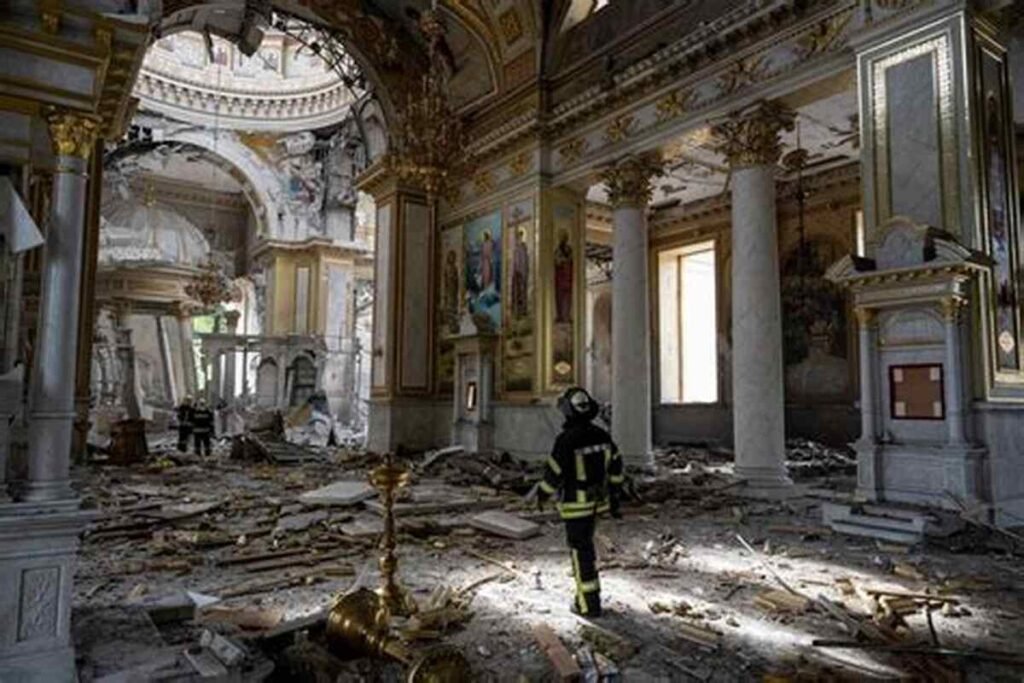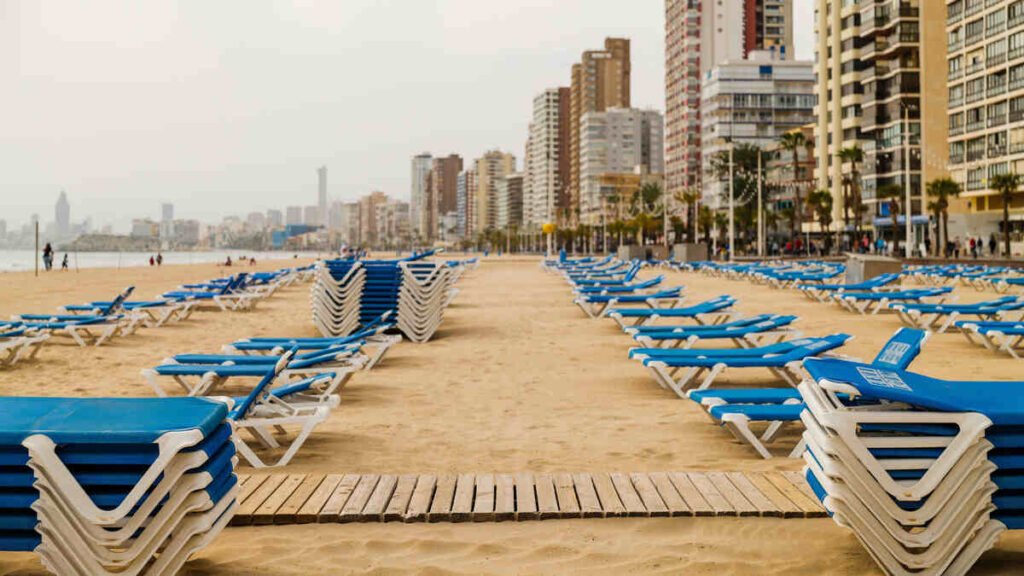“Tourism is a peace industry. Where there is peace, tourism thrives. Where there is war, tourism dies.”
This statement of Taleb Rifai, the former Secretary-General of the UN World Tourism Organization, has never felt more relevant than in the context of today’s splintered tourism sector in Russia, Ukraine, and the surrounding European countries.
Tourism, a vibrant thread connecting diverse cultures, economies, and people, often seen as a symbol of cultural exchange, is among the top sectors that feel the repercussions of war. The war which has been going on in Ukraine for the last three years, and the geopolitical tensions which have rippled across the European continent due to this conflict have resulted in the unravelling of the tourism sector.
Before February 2022, Ukraine attracted a large number of domestic and international travelers annually, but it now struggles to sustain its tourism sector. Domestic and international travel has significantly reduced during the last three years in Ukraine.
Russia on the other hand, has suffered from international isolation, economic sanctions, as well as visa restrictions by the European countries, which had caused a decline in tourism in the country. And the European countries, which once welcomed millions of visitors and tourists also saw a decline especially during the first half of 2022, when the majority of the overseas visitors cancelled or postponed their visit to the continent.
The Russia-Ukraine war has not only caused the destruction of cultural heritage such as monuments, artifacts, and religious sites in Ukraine but has also reshaped tourism patterns and affected the livelihoods of tourism-dependent communities across Europe.
Damage to the Cultural Properties and Assets
Cultural property includes movable or immovable assets of great significance to cultural heritage such as historic religious sites, monuments, artifacts, books, and other objects of archaeological significance, as well as the building whose main purpose is to preserve and exhibit the cultural property such as museums, libraries, and archives.
The Hague Convention for the Protection of Cultural Property in the Event of Armed Conflict, adopted by UNESCO, prohibits the parties to conflict from committing “hostility directed against the historic monuments, works of art or place of worship which constitute the cultural or spiritual heritage of peoples.”
Similarly, in 2017, the United Nations Security Council passed Resolution 2347, the first-ever UNSC resolution solely dedicated to the protection of cultural heritage in case of armed conflict.
The UNESCO World Heritage Convention, which primarily focused on protecting world heritage, included three Ukrainian heritage sites in its list of “World Heritage in Danger” in 2023. These sites include Kyiv’s Saint-Sophia Cathedral and Related Monastic Buildings, the Ensemble of the Historic Centre in L’viv, and the Historic Centre of Odesa.
However, despite the efforts of international organizations, irreplaceable damage has been done to the cultural properties during the Russia-Ukraine war. In 2023, UNESCO began assessing the cost of damages and possible restoration of the sites damaged during the war. It also launched an initiative to keep records of the buildings and monuments that were still intact, to ensure if the sites were hit, the records could be used to facilitate the reconstruction.

In February 2024, UNESCO published a report according to which, the total value of damage neared $3500 million, a 40 percent increase in damage compared to 2023. The detailed report showed that the damages to sites of historic interest neared $2441 million, damages to historical artifacts were $161 million, damage to buildings and workshops in the cultural and creative industries neared $262 million; and the damages to tourist facilities were close to $650 million.
The organization estimated that Ukraine would require at least $9 billion for the restoration and preservation of the artifacts and historic sites damaged during the conflict.
Impact of War on the Tourism Sector in Ukraine and Russia
Ukraine, which had become a popular tourist attraction due to its long history of hospitality, natural beauty, and low costs, saw a significant decline, first during the 2014 Crimea crisis, then due to the Covid lockdown, and finally after the 2022 Russia-Ukraine war. The war destroyed monuments and cultural assets which resulted in not only resulted in the loss of identity of Ukrainian society but also reduced the number of tourists visiting the country.
Before the Crimea annexation, nearly 24.67 million foreigners visited Ukraine in 2013 for tourism, however, this number reduced to half after 2014 when only 12.71 million foreigners visited the country, resulting in the reduction of revenue to $1600 million. In 2020, merely 3.14 million people visited Ukraine generating revenue of $400 million.
As the travel restrictions began to lift, the number of tourists also increased. However, the joy proved premature due to the outbreak of war in February 2022. United Nations World Tourism Organization (UNWTO) reported in 2014 that only 2.17 million visited Ukraine in 2022, and 2.4 million people in 2023, generating a total revenue of $1700 million.
Mostly, when analyzing the impacts of this war, scholars focus on Ukraine and how its entire economy and tourism sector has been impacted. But Russia has also undergone several transformations in the last three years. Its economy and tourism have been badly affected due to international sanctions and its direct involvement in the war.
According to the United Nations World Tourism Organization (WTO), around 138.6 million tourists visited Russia between 2010 and 2014, generating revenues of $8.800 million to $11,800 million. In 2013, it became the 9th most visited country in the world and 7th most visited state in Europe.
Read More: US May Halt Ukraine Peace Efforts if No Breakthrough Soon: Trump, Rubio
After Russia annexed Crimea in 2014, no travel restrictions were imposed on the country, which contributed to the steady incline in tourism. Russia also hosted the Olympics in 2014 and the FIFA World Cup in 2018, which led to an increasing number of visitors to the country.
The tourism sector of Russia took a major hit after it invaded Ukraine in 2022, resulting in travel restrictions imposed by the European countries. Today, it is impossible to visit the country directly from any European airport. Similarly, several Consular services have put Russia in the category of “not recommended for travel,” advising tourists to visit the country after the conflict has been resolved. Foreign bank cards could not be used following the war. Via and Mastercard also discontinued their services in March 2022, causing payment issues for foreign visitors.
The foreigners who visited Russia for tourism, after the conflict began, entered through Central Asian states. Meanwhile, the travel trends also changed. Before the Russia-Ukraine war, a large number of Europeans visited Russia, however, after the conflict began, the people who visited Russia were mainly from China, CARs, and India. In 2023 alone, more than 200,000 Chinese people visited Russia, mainly due to China introducing visa-free initiatives in August 2023. Similarly, Russia also became a travel destination for Indians after the war. In the first half of 2024, around 28,500 tourists from India visited Russia.
Nevertheless, the change in travel trends cannot change the fact that there has been a significant decline in tourism in Russia due to travel bans and sanctions by European countries.
Impact of Russia-Ukraine War on Tourism in Europe
The Russia-Ukraine war led to a shift in the structure of tourism in the European continent, even though the European countries were not directly involved in the conflict. One of the most significant reasons was the lack of Russian and Ukrainian visitors, travel restrictions in Russia, and the dangers of traveling to Ukraine amidst the active war.

After the Covid lockdown period ended, tourism improved in several European countries. But soon after, the Russia-Ukraine conflict began which led to economic sanctions on Russia and several European states stopped purchasing oil and gas from Russia. It resulted in the rise of fuel prices across Europe, which affected tourism, mainly due to an increase in transport charges.
In March 2022, Net Sentiment Score (NSS), which gauges public sentiment towards a situation, published a report that analyzed public sentiment regarding visiting Europe for tourism. The report indicated that the perception of European destinations had dropped by 15 points, with Estonia, Poland, and Lithuania being considered the most dangerous places to visit in 2022. While Greece received the highest positive rating, making it a choice for tourists.
Europe also saw a decline in tourism because of the perception Russia-Ukraine war created in the media. People feared visiting the region altogether since they were unsure how safe other European countries would be if the war escalated beyond the boundaries of Russia and Ukraine. Although now tourism has started to somewhat recover in several European countries, there are still several difficulties to overcome before it is fully restored.

During war, tourism is always overshadowed by survival, especially in countries that are at war with one another. After the conflict between Russia and Ukraine started in February 2022, travel restrictions and cautions were introduced which not only impacted Russia and Ukraine, but the entire European continent.
Tourists visit any country to explore culture, natural beauty, and religious sites. In the case of Russia, its tourism sector would fully recover after the conflict has ended and travel bans are lifted. Tourism in the rest of Europe would also improve once the energy imports from Russia would begin and the travel costs are reduced. But in the case of Ukraine, a lot of its tourist destinations have either been destroyed or damaged, especially in the east and southeast of the country, which would not only take years but also billions of dollars to fully restore.
Even after the restoration, there is no certainty that Ukraine would be able to attract the same large number of tourists that it used to before the war.
Javaria Khalid is a writer and researcher, who specializes in Pakistan's Foreign Policy Analysis, transatlantic geopolitics, and Pakistan’s relations with the European countries and the EU. She can be reached at javariakhalid011@outlook.com




